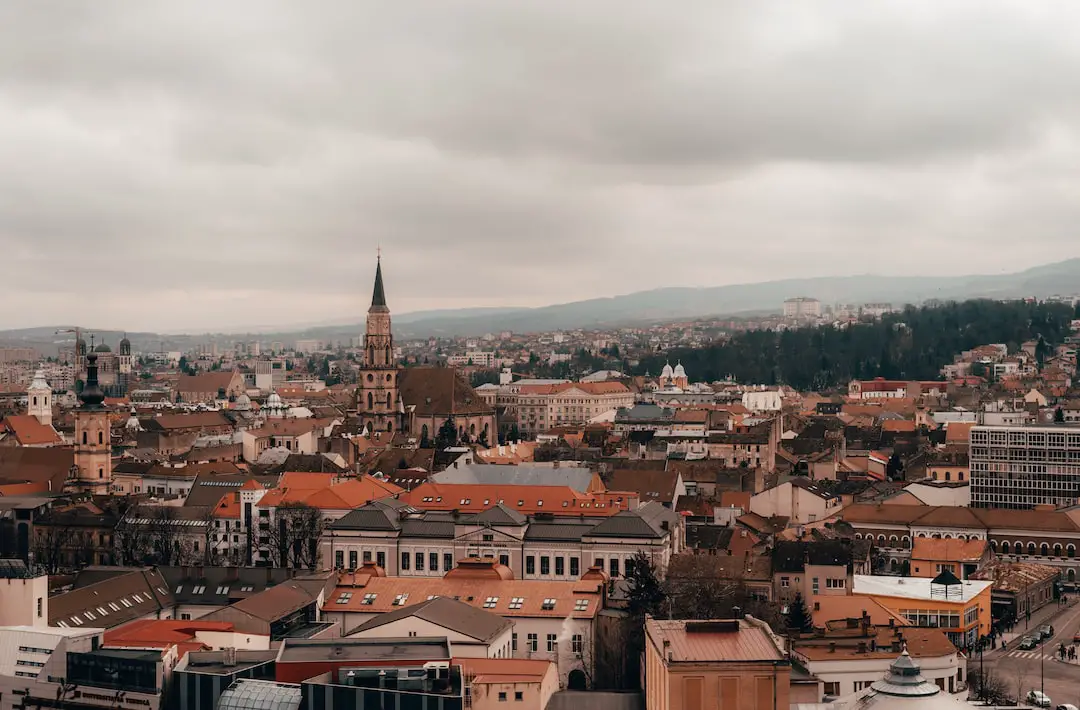
Nestled in the heart of Transylvania, Cluj-Napoca is a city where every cobblestone whispers tales of the past. It’s a place where Gothic spires reach for the sky, Baroque facades demand your attention, and the modern steel-and-glass structures reflect a city moving confidently into the future. As someone who’s wandered these streets and marveled at the architectural tapestry, I’ve seen firsthand how the city’s buildings tell a story of resilience and transformation.
The Roots of Cluj-Napoca’s Architectural Heritage
Let’s take a stroll down memory lane, shall we? The origins of Cluj-Napoca’s architecture are as old as the Roman Empire, with remnants still visible in the city’s layout. Medieval times brought fortifications and the first wave of Gothic structures, like the majestic St. Michael’s Church, which still stands proudly at the city’s core. It’s a sight to behold, with its towering spire acting as a compass for those wandering the Old Town’s labyrinthine streets.
Baroque Brilliance and Austro-Hungarian Elegance
Fast forward a few centuries, and the Baroque era left its indelible mark. The Banffy Palace is a prime example, with its intricate facades and grandiose halls. It’s like stepping into a period drama, minus the corsets and horse-drawn carriages. The Austro-Hungarian influence is also palpable, with elegant buildings that line the main squares, showcasing a blend of Hungarian Art Nouveau and Viennese styles that are a feast for the eyes.
Industrialization and Modernism’s Rise
As the wheels of industry began to turn, Cluj-Napoca embraced modernism. Architects broke free from past constraints, experimenting with new materials and forms. The interwar period saw a boom in construction, with modernist buildings popping up like daisies. They brought a sense of simplicity and functionality that was a breath of fresh air amidst the more ornate historical structures.
Communist Standardization and the Concrete Jungle
Under communist rule, the city’s architecture took a pragmatic turn. Utilitarian apartment blocks sprang up, reflecting the ideology of the time. These concrete giants might lack the charm of older buildings, but they’re a chapter in the city’s story nonetheless. They stand as a reminder of a time when individual expression took a backseat to collective uniformity.
The Contemporary Canvas of Cluj-Napoca
Today, Cluj-Napoca is a canvas for contemporary architects. The cityscape is dotted with modern marvels that push the boundaries of design. Glass facades mirror the sky, while sleek lines cut through the historical backdrop. It’s a testament to the city’s forward-thinking spirit and its embrace of innovation.
Preservation and Progress: A Delicate Balance
But it’s not all about the new. There’s a delicate dance between preservation and progress here. Efforts to restore and maintain historical buildings are in full swing, ensuring that the city’s architectural heritage isn’t lost to the sands of time. It’s a balance that’s not always easy to strike, but Cluj-Napoca seems to do it with grace.
FAQs
- What is the most iconic piece of architecture in Cluj-Napoca?
St. Michael’s Church is often considered the most iconic, with its Gothic architecture and towering presence in the heart of the city.
- How has Cluj-Napoca’s architecture changed over the years?
The city’s architecture has evolved from Roman and medieval foundations to Baroque and Austro-Hungarian influences, through to modernist and contemporary designs.
- Are there any guided tours focusing on Cluj-Napoca’s architecture?
Yes, there are several guided tours available that explore the city’s architectural heritage, offering insights into its historical and modern buildings.
Conclusion
In conclusion, Cluj-Napoca’s architecture is a rich tapestry that weaves together centuries of history and innovation. From Gothic to Baroque, from Austro-Hungarian elegance to modernist simplicity, and now to contemporary boldness, the city’s buildings are a testament to its ever-evolving identity. As we’ve explored the streets and stories behind these structures, it’s clear that Cluj-Napoca is not just preserving its past but also building a future that continues to inspire and captivate. Whether you’re an investor, homeowner, or simply a lover of beautiful spaces, Cluj-Napoca’s architecture is a treasure trove waiting to be discovered.